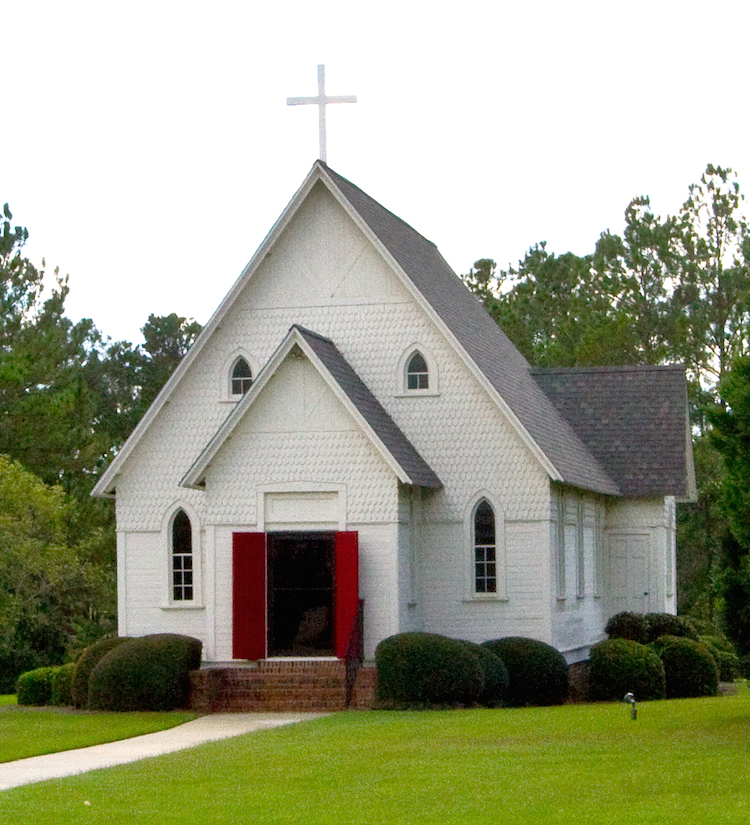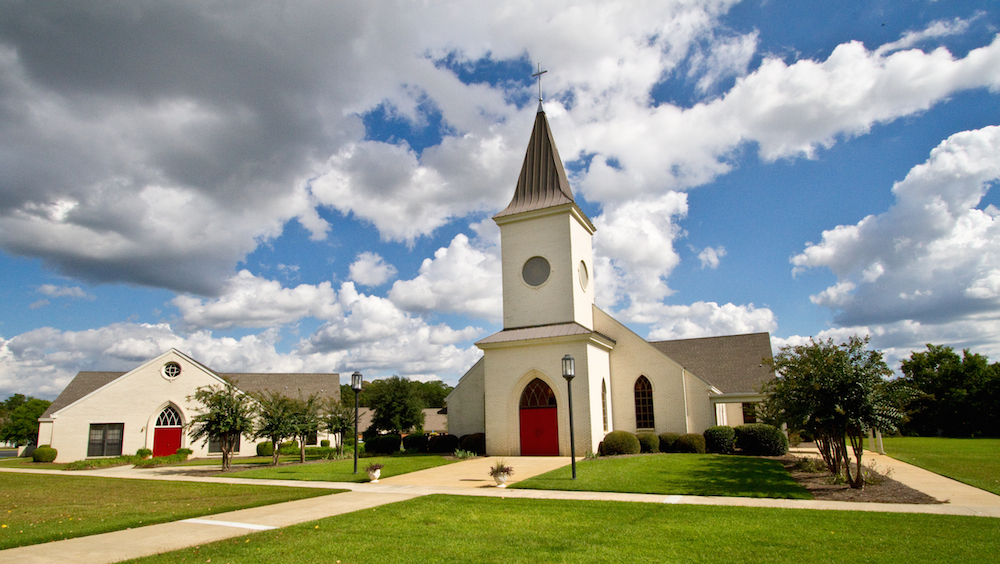After his 1892 consecration as third bishop of Georgia, the Rt. Rev. Cleland Kinloch Nelson began the task of locating and organizing isolated Episcopalians in south Georgia. During this process he found a handful of communicants in Tift County who wished to establish a mission for the Episcopal Church in Tifton. In 1898 the congregation known as St. Anne’s was born, and the Rev. J.W. Turner was sent by the bishop to conduct monthly services in space borrowed at the nearby Methodist church on Love Avenue.
In a letter dated February 7, 1898, Bishop Nelson gave his approval to a building plan and pledged $300 toward thetotal cost of $500 for the project. Construction began on March 29, 1898 under the supervision of Edmund Harding Tift, brother of Tifton’s founder Captain Henry Harding Tift. Highly successful in the lumber and shipbuilding industries, the Tifts provided for and oversaw the woodwork in the original church. Constructed from rare curly pine so delicate it had to be carved under water, the stately carpenter gothic sanctuary became a stunning addition to the downtown Tifton landscape. After its completion, the church was consecrated by Bishop Nelson on June 1, 1902.
From 1898 to 1938, St. Anne’s grew from 3 to 39 communicants and was served by fourteen different visiting priests. In 1940 while the Rev. John R. Bentley served as vicar, a combination parish hall / rectory was constructed on the property. This building allowed members to gather for social events, meals, and more while also providing living space for a resident vicar.
By 1955 St. Anne’s had become fully self-supporting, thereby attaining parish status in the Diocese of Georgia. The Rev. Charles C. Demere served as first rector from 1955 to 1959. During the 1970s St. Anne’s reverted back to mission status but was later revitalized under the guidance of the Rev. Arnold A. Bush, Jr. Serving as vicar and later rector from 1974 to 1983, Fr. Bush encouraged the members of St. Anne’s in growth and evangelism, ultimately resulting in the need for significant expansion.

In 1982, the same year the Rev. H Jacoba Hurst was called as rector, the small seventy-nine-year-old church was loaded on a truck and moved ten blocks north from its historic location to the church’s current property at Central Ave. and 24th St. In 1983 an education building was constructed on the property, allowing room for offices and Sunday School classes.

With three Sunday services conducted each week in the small orginal sanctuary, the need for larger worship space had become pressing. In 1985 a new 300-seat sanctuary was built in a style compatible with the elegant simplicity of the original church, which now serves as a chapel and is known affectionately as “Little St. Anne’s.”
The Rt. Rev. Harry Woolston Shipps, eigth bishop of Georgia, consecrated the new sanctuary on October 12, 1985. A new parish hall followed in 1986. In 1994 the Chambers Memorial Organ, built by Casavant Frères of Canada, was installed in memory of Jerry Chambers.
Under the leadership of Fr. Hurst, the 1980s and 1990s proved to be a season of significant spiritual growth at St. Anne’s. As a result of his abiding devotion to strong liturgical worship and his abilities as a spiritual teacher and historian, St. Anne’s became a thriving center for healing, education, thoughtful spirituality, and worship steeped in the sacraments. After Fr. Hurst’s ministry of twenty-three years, the Rev. Ronald Davidson was appointed interim rector in 2006.
In 2009, the Rev. Thomas A. “Lonnie” Lacy II, was called. Building on the foundations laid by generations past, St. Anne’s placed new emphases in the 2010s on strong lay leadership, biblical literacy, foreign mission, local outreach, and ministry with the young. In 2015 during a new season of growth, the church built a new ministry center, replacing the original education building and expanding the congregation’s capacity for education, outreach, and ministry. The ministry center is dedicated to lifelong parishioner and architect Roy Rankin, a descendant of Captain Tift. Traditional liturgy combined with a broad approach to music, a strong theology of grace in the pulpit, and a joyful focus on celebrating the fulness of the Christian year all brought new meaning and strength to the life of the parish.
From St. Anne’s humble beginnings as a tiny mission in the 1890s to our thriving life together today, we are deeply aware of God’s presence and guidance throughout our history. With grateful hearts for all that has been, we offer the present to God’s glory, and we look to the future with hope.
